For inquiries regarding water supply, please contact the Water Works Bureau Customer Service Center.
Water Works Bureau Customer Service Center
Telephone: 045-847-6262 Fax: 045-848-4281
※Please be careful not to make a mistake.
Here's the text.
Last Updated February 9, 2023
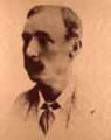
Mr. H.S. Palmer, an English engineer
After the opening of the port, the population of Yokohama, which was a cold village with only 100 units, increased day by day, and the city developed rapidly. At that time, residents dug wells in search of water, but Yokohama was not blessed with good quality water because it had reclaimed and expanded the sea, and most well water contained salt and was not suitable for drinking water. For this reason, the governor of Kanagawa Prefecture welcomed British engineer Henry Spencer Palmer as an advisor, and in 1885, constructed a water supply at Mitsui (currently Mitsui, Midori-ku, Sagamihara-shi) at the confluence of the Sagami River and Doshi River in 1885. We started construction and started water supply as Japan's first modern water supply in October 1887.
At the start of water supply, there was no law on water supply, and the water supply business was operated by Kanagawa Prefecture. Later, the city of Yokohama was born with the enforcement of the municipal organization in April 1889, and the following year, in Meiji 23 (1890), the water supply ordinance was enacted as the first water supply law in Japan. Along with this, the water supply business will be managed by municipalities, and it was transferred to Yokohama City in April of the same year and operated as a municipal government.
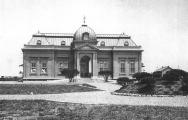
Nishiya Water Purification Plant Main Building (around 1915)
In 1890, when the water supply business was transferred to Yokohama City, the population of Yokohama City reached 120,000 (80,000 water supply population), far exceeding the original plan (70,000 water supply population), and the population increased. . To cope with this, the water intake point was moved to the Doshi River in 1897, and the first expansion work was carried out from Meiji 31 (1898) to Meiji 34 (1901) to build the Kawai Purification Plant. Since then, the population has increased with the expansion of the city area, and the demand for industrial water has surged in the wake of the Russo-Japanese War. In the second expansion work, the Nishiya Water Purification Plant was completed in 1915. In 1916, we purchased a forest in Michishi Village, Yamanashi Prefecture, and started managing and conservation as a water source forest to maintain the water quality of the Doshi River.
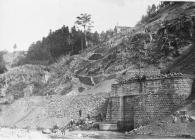
Abalone and Water Intakes Damaged by the Great Kanto Earthquake
After two expansion work, the Yokohama Channel responded to the increasing demand for water, but the facilities were devastated by the Great Kanto Earthquake that hit the Kanto region on September 1, 1923. Was. Immediately after the earthquake, we carried out transportation and water supply and emergency restoration, and then started reconstruction work and worked on reconstruction after the earthquake. In addition, in order to cope with the increase in water supply due to reconstruction, we implemented water-saving measures such as conducting water leakage surveys and shifting water usage to a system for measuring all households.
In addition, the city of Yokohama was once again severely damaged by the air raid following the Pacific War that began in 1941. At the end of the war, the water supply population dropped sharply from 738,000 before the war to 223,000, and the number of water supply units dropped from 156,000 to 48,000, and government buildings and water supply facilities were also severely damaged. .
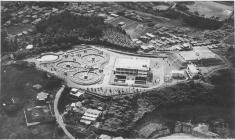
Tsurugamine Water Purification Plant around 1961
In addition to the population growth associated with post-war industrial development, the standard of living has improved, with the rapid spread of washing machines, private baths, and flush toilets, and water demand has also increased significantly. To respond to this, the 5th expansion work (from 1956 to 1961) to the 8th expansion work (from 1971 to 1980), the Tsurugamine Water Purification Plant and the Kosuzume Purifiction Plant were constructed, and the Nishiya Water Purification Plant was expanded. At the same time, new water sources such as the Sagami Dam and Shiroyama Dam were also developed.
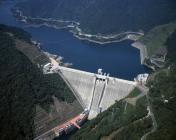
Overview of the Miyagase Dam
With the eight expansion work and the full-scale operation of the Miyagase Dam in 2001, water sources and facilities that can supply stable water in the future have been prepared. After a period of centered on “maintenance and management” of facilities and other facilities developed during the expansion era, the renewal of aging facilities, earthquake resistance in preparation for large-scale earthquakes, and optimization of the scale of water supply facilities due to a decrease in water demand The importance of "renewal and rebuilding" is increasing, such as by performing.
In 2014, the city's oldest Kawai Purification Plant was rebuilt into one of the largest membrane filtration plants in Japan that utilize natural energy, and the Tsurugamine Water Purification Plant was abolished. Currently, we are working on redevelopment of the Nishiya Water Purification Plant.
Yokohama Channel will continue to maintain and manage facilities such as three water purification plants in the city and approximately 9,300 km water pipes every day, and stably deliver safe and high quality water to customers 24 hours a day, 365 days a year.
Water Works Bureau Customer Service Center
Telephone: 045-847-6262 Fax: 045-848-4281
※Please be careful not to make a mistake.
Public Relations Division, Water Works Bureau Business Promotion Department
Telephone: 045-671-3084
Telephone: 045-671-3084
Fax: 045-212-1169
Email address: su-suidokoho@city.yokohama.lg.jp
Page ID: 279-160-689